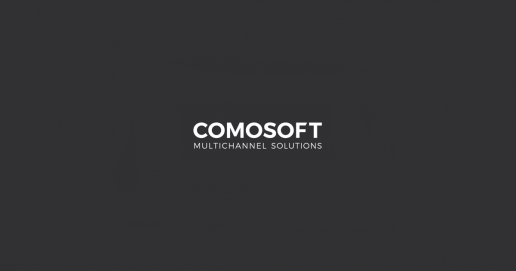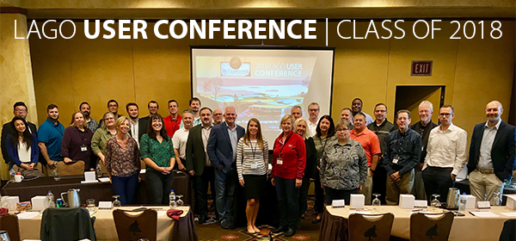LAGO IN ACTION – Success story at RAJA Media
LAGO IN ACTION – Success story at RAJAMedia
- RAJA achieves higher efficiency and productivity of the users
- You can include user requests in the development process
- Users save time by automating recurring tasks
- This enables you to focus on tasks with the highest added value
- User requests are structured and stored in a central and homogeneous backlog for further development
Internal News
Internal News
We are pleased to announce that our colleague Lars Kaiser will be taking up the position of “Director Finance” with immediate effect and will also be responsible for the HR division of the GmbH. Furthermore, Lars Kaiser hands over the management of Professional Services to Martin Schönhöfer and thus the responsibility for all customer projects in Europe and Asia. Christian Koch will support him with his experience in implementing customer projects as “Deputy Head of Professional Services”.
(from left to right: Lars Kaiser, Martin Schönhöfer, Christian Koch)
From Chaos to Clarity
Finding the right “Power Tools” like PIM- and DAM systems for pricing & inventory data management
As the need to work remotely expands, retail marketers are searching for more powerful, integrated systems to manage their product pricing, inventory, and other complex asset management systems.
Retailers have always relied on data to manage their complex relationships with suppliers and customers. Marketers and planners must constantly juggle and connect big amounts of complex information with pinpoint accuracy. The data reside in multiple, often separate sources, from retail PIM and DAM systems to databases that handle pricing and inventory. Navigating all that data is difficult.
As the “new normal” for business becomes clearer, it is likely that more and more information workers will be operating remotely. And without the benefits of working in the same office space as their peers and support staff, product marketing managers need a new set of “power tools.” From any location, they must be able to easily manage all required data, and use it effectively in focused campaigns.
Having the right price data in your PIM system can make all the difference in a highly-competitive promotion
The rapid shift to remote data operations follows a decades-old transition to online business in general. The rise of e-commerce, and of consumers’ detailed, mobile-driven awareness of competitive options, has made product pricing of paramount importance. Having the right price for a single product – among hundreds of thousands of SKUs – can make all the difference in a highly-competitive promotion. When you add regional store variations, current margins, and last-minute sales or discounts, the pricing question can be challenging indeed.
Databases for current pricing can be connected to the retailer’s PIM system – or not. They can be hosted in the cloud – or not. Nearly always, they are custom-built by IT specialists who may still work for the company – or not. Pricing systems often have plenty of legacy system issues to make life difficult for the product marketing person charged with creating accurate campaigns.
A lot depends on accurate pricing. With razor-thin margins and high customer expectations, errors are a potential for serious financial chaos. Fortunately, advanced systems such as LAGO can create live connections between pricing data, product information, and multiple, versioned promotions, whether intended for print or online campaigns.
The “last mile” connection to a marketing automation or print production system is crucial for success
Another challenge to remote retail marketing is the state of the company’s inventory. The supply chain disruptions of the past few months have taught us that shortages can take us by surprise and lead to customer dissatisfaction. Like pricing, current inventory levels of every product are critical to data-driven marketing campaigns. Knowing how to describe and price a specific product is hard enough. Knowing how many (or how few) are available in a given branch location is even harder. Like pricing, inventory data are stored in a secure database – sometimes separate from the company’s PIM system, but usually integrated with it. However, for many retailers, the “last mile” connection to a marketing automation or print production system is usually less than perfect.
In order to create successful, sustainable marketing campaigns, retail marketing professionals need real-time access to inventory data, instantly correlated to specific products in every location. They not only need the data at their fingertips; they also need it whether they are working in the office or off-site.
Remote working increases the need for central data storage, that is accessible from anywhere
Many retailers today are exceptionally large corporations with major investments in IT, logistics, and access to media channels of every type. Marketing teams tend to be smaller, more agile teams, ready to respond quickly to shifting local conditions and implement campaigns responsive to local conditions. Think of the corporation proper as the aircraft carrier and the marketing teams as its squadrons of jets or helicopters. They must spring into action at a moment’s notice – in response to a tactical situation or a call for disaster relief. But the jets and helicopters, as fast-moving as they are, cannot function without the resources of the mother ship.
Marketing professionals absolutely need all the data that the mother ship possesses, but they need it in an environment that allows them to remain agile, ready to respond instantly to changing market conditions. They need a dashboard view of all the data, plus the means to deliver precisely targeted campaigns at the local level. The rise of remote working as the “new normal” has only heightened this need. Even in the chaos of today’s retail world, they can maintain their success – if they have the right tools for the job.
Digital Output – The True Potential
The True Potential of Digital Output
Retail grocers are an integral part of a force now fighting the effects of COVID-19. With vital supplies threatened by supply chain and consumer behavior disruption, having the correct data in the right place is critical to their success.
An army marches on its stomach. It’s simple. No great enterprise can succeed if its participants cannot meet their basic, physiological needs – in this case, food. In modern times, supplying that need requires a complicated network of producers, distributors, and retailers – things that most of us rarely think about.
The army part of the metaphor is very apt. As of this writing, the entire world is engaged in in a fight against the novel coronavirus, and the disease it causes. As with all fights, there are front-line fighters (researchers, healthcare workers, and first responders), supporting forces, and civilians doing their part. In this particular fight, a big part of the “supporting forces” are the grocery retailers we once took for granted.
Accelerated Change for Grocery Retailers
In a previous article, we outlined the shifts in consumer behavior pushing grocery retailers to alter their ways of doing business, including the rise of mobile shopping apps and innovative pickup or delivery options. But what was considered experimental a few short months ago has become mainstream almost overnight. Shopping convenience has been replaced by a more powerful motive.
The sudden but very reasonable fear of infection has led to strict, disease-containment measures — not just masks, distancing, and one-way store aisles, but also a rush to online ordering, curbside pickup, and at-home delivery. One Comosoft client executive at a major chain noted recently that grocery pickup and deliveries had increased by 130% per week since mid-March. Senior store managers are working the floor alongside associates, busy filling orders for curbside pickup.
All this not a new phenomenon; it is simply a change in velocity. Mobile apps are no longer merely convenient; they are becoming essential.
It’s Still All About the Data
Back in the old days (as in last month), the process of grocery marketing was driven by vast, complex collections of data: product images, descriptions, prices, inventory, and marketing priorities. It still is. We published several articles describing how all these data can be effectively managed and channeled into printed and online media for the benefit of shoppers and retailers alike.
Today, however, those channels and the way we use them have shifted dramatically. Shoppers, focused on getting in and out quickly and efficiently, pay little or no attention to in-store flyers and circulars. By far, mobile shopping apps and, to a lesser extent, non-mobile websites have taken center stage in the grocery shopping experience.
The medium has shifted but the consumer need is still the same. Shoppers must find what they need, “see” it, estimate its value, and make a purchase decision. The grocery retailer’s mobile app needs to present all the available products, prices, and descriptions accurately—and be ready to communicate changes when something is out of stock or limited to one item per customer. Shopping apps are ideal for this, but only if all the data are effectively and efficiently utilized.
Digital Output
Fortunately, such data integration potential already exists, in systems such as LAGO. Data from multiple, often separately-developed DAM, PIM, and other databases can be effectively automated and coordinated to produce well-designed, multi-version printed pieces, using a plugin for Adobe InDesign. But print is only part of the story. LAGO also automates the output of overlays and XML data required by mobile shopping apps. Digital output for app use is automatic and, for the most part, can reach the consumer far faster than the more familiar printed circular.
This has enormous implications, not just for the immediate crisis but long afterwards. When there’s a sudden change in inventory for a particular household item, the retailer’s marketing team can rely on the mobile app – fed by new digital output – to inform and guide the consumer. Product marketing teams will still need to develop marketing campaigns, but these will be aided rather than hindered by the flow of interrelated data.
In other words, the crisis has accelerated a trend that was already well under way: using integrated data to connect the needs of retailers and consumers alike. Companies that have already begun the integration journey are better prepared for the change in velocity.
The New Normal
Like all major crises, this one will someday be over. We will get back to normal, but “normal” itself will be different. People will once again enjoy social gatherings including, as trends indicate, at increasingly destination-oriented grocery retailers. The difference will be in how the retailer augments the total shopping experience using available data.
Intelligent digital output will be the key to that experience – not just getting shoppers to buy the daily specials but also enhancing the consumer’s connection and loyalty to the brand. Whether the data are expressed in interactive kiosks, signage, interactive apps, or in printed collateral, their accuracy and relevance to individual shoppers will be paramount.
The future depends on digital output – and the preparedness of companies to use it wisely.
Cancellation Port of Thoughts 2020
Port of Thoughts 2020 is cancelled!
Dear Port of Thoughts guests,
the health of each individual and the protection of society are very close to our hearts. Therefore, we regret to inform you that we have to cancel the Retail Summit – Port of Thoughts scheduled for May 14, 2020 due to the current protective measures against the spread of the coronavirus. In view of current developments, we believe that this is the only sensible step to ensure the health of all concerned.
We will, of course, keep you informed about a new date.
We ask for your understanding.
Your Port of Thoughts Team
PIM-Point Accuracy
PIM-Point Accuracy
When a retailer has hundreds of thousands of SKUs and over 2,000 stores, how can it leverage all that data effectively—and profitably—in its public marketing efforts?
Enterprise databases are not built from scratch. They certainly do not spring into existence fully-formed, complete with a high-profile launch event. Rather, these dinosaurs of the IT world evolve slowly—and successfully—from their primordial ancestors. Engineered to handle huge volumes of complex data, such systems are powerful enough to support large, complicated businesses.
This awesome power comes at a cost, however. Because they have evolved from previous, often arcane systems, enterprise databases are notoriously slow to adapt to changing market conditions and disruptive new technology.
So Many SKUs, So Little Time
Such is the case with Product Information Management or PIM systems. When a company manufactures or sells a product, data from a PIM are used to keep track of every aspect, from colors, size variants, and part numbers to serial numbers, optional accessories, and specifications. Each item, known as a Stock Keeping Unit or SKU, also has pricing information, inventory levels and locations, manufacturing details, and a host of marketing data. The latter, usually product descriptions, photos, and even videos, are kept in a separate but somehow related database called a Digital Asset Management or DAM system.
That’s a lot of data. For each SKU, there may be dozens or even hundreds of data points. Usually, these not all in the same database but spread over several related but very different systems. Each has its own, important business purpose and each much share information in order to manage that particular product. One particular department—product marketing—must access almost everything related to a particular SKU.
Now, multiply that problem by 400,000.
Home improvement retail giant Lowe’s handles that number of products and more, selling them from any of its 2,000 stores—plus its online sales portal. To market this vast array of products successfully, the company must find a way to leverage millions of data combinations—and do so in a way that guides the shopper to just the right product at just the right price.
Up to the Challenge
In August, Multichannel Merchant published a case study describing how Lowe’s and PureRED (Lowe’s digital agency) were able to solve a complex, data-intensive marketing problem — the retail circular. Using the LAGO system from Comosoft, product marketing managers and designers were able to identify and prioritize SKUs for a campaign and, using data from both PIM and DAM systems, import each product into a well-designed Adobe InDesign template.
Much of the detailed circular production work (e.g., formatting and populating tables, finding the right product image) became highly automated. Pricing and other data were linked to the original data source, so a last-minute change to the latter would automatically update the former—right up to the moment the file was generated for the printer. The potential for errors was greatly reduced.
The massive data juggling act at Lowe’s is even more impressive when you consider that each individual store circular, although similar in overall design, is unique in terms of featured products and sale prices. Multiply each data-intensive printed circular by the over 2,000 Lowe’s stores that use them on a daily basis.
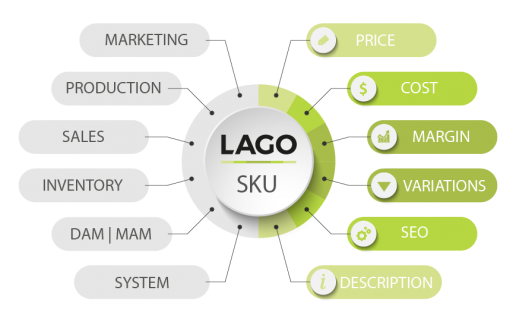
The Digital Shift
The PIM/DAM dilemma would be hard enough if printed circulars were the only marketing channel. (LAGO is also used for other complex, versioned print products, notably catalogs.) However, digital marketing—especially mobile apps—have upended the plans of most retail marketers. A digitally produced circular ad must not only be attractive, informative, and easily findable, it must also be an “E-Z button” for buying the item.
Think about it. An ad for a screwdriver set on a store’s mobile app not only has to show the user what it is, and how much it costs (with prices changing at any moment), but also similar items, customer reviews, and whether it’s in stock or available for delivery.
That’s a lot of data. Fortunately, as the case study shows, the same PIM/DAM data acrobatics used to streamline print circular production could be repurposed to populate the Lowe’s mobile app.
Reaching the Target
By definition, product marketing must be nimble and responsive to consumer habits and preferences. Online and mobile tools are ideal vehicles for connecting with today’s customers. However, only if the massive amounts of product data can be accurately and cost-effectively managed—behind the pretty face of an ad or app—can the targeted message reach the consumer.
Comosoft Newsletter (Spring/Summer 2019)


A Message from our President
With spring at its end and summer finally here, we're already at the halfway point of the year. And it’s a pretty special year for us here at Comosoft: 2019 marks our 25th year making industry-leading marketing production tools. Back in 1994, Comosoft was one of the first companies in the world to tackle the challenges of manual planning and productions workflows, bringing two previously separate entities together: product data and images–the database publishing begins era begins...
Today, Comosoft is at the forefront of digital transformation, helping our customers innovate and optimize their planning and production processes. When systems change, so do roles–something we take very seriously as we help our customers adapt their processes for all sales channels in the quest to reduce time to market.
Since our inception, LAGO has evolved into an end-to-end multichannel marketing solution, from planning to output. Many of the features you know and enjoy today are a result of customer feedback or customizations, which is why we really mean it when we say that none of this would be possible without you, our customers. To all of you, we'd like to take this opportunity to thank you for your support over the years. We look forward to serving you for many more to come.
All the best,
Randy Evans
President

API Survey: Thanks for your participation!
A couple of months back, we sent out a survey to encourage feedback regarding the LAGO API. The results are in: while there are many different use cases out there, the overwhelming majority of you want us to focus on the image handling capabilities of the API first. This doesn't mean we're not also working on other aspects of the API, but rather prioritizing image handling. More API updates coming in the not too distant future.
The API survey is still open. If you'd still like to register your feedback, let us know and we'll send you a link and a password. We've extended the survey deadline to June 30.

LAGO 5: So Many Reasons to Upgrade!
With enhancements to new features and modules, LAGO 5 has unprecedented power and flexibility. Below you'll find a list of some of what's new in LAGO 5:
- LAGO-specific shortcuts in InDesign
- LAGO Scripting Enhancements
- Enhanced Image Alignment Options in Element Layouts
- New Function for Placement Rule Scripting
- Search folders in LAGO Proof
- Enhanced markup tools in LAGO Proof
- PDF Format for Correction Documents
- Alpha Channels: Enhanced InDesign integration
- Ability to copy element layout category settings in document template
- Support for macOS Mojave & Adobe CC2019
For a full list of all the new features in LAGO 5 or if you have any other questions about upgrading to LAGO 5, please email info@comosoft.com to schedule a demo.
Module Spotlight: LAGO Proof
LAGO 5 brings many new features to the table and Proof is no exception. We've been busy adding tons of great new ways to interact with proofs.
As of the latest release, Proof now offers:
- Comparison slider for multiple page comparison
- Pencil tool for freehand markup
- The ability to link correction marks to elements (instead of the page)
- The ability to view and store proofs as complete, exportable PDFs
- Highlight and strikethrough text markup
These great new proofing features are only available in LAGO 5. Please email info@comosoft.com to schedule a demo preview.
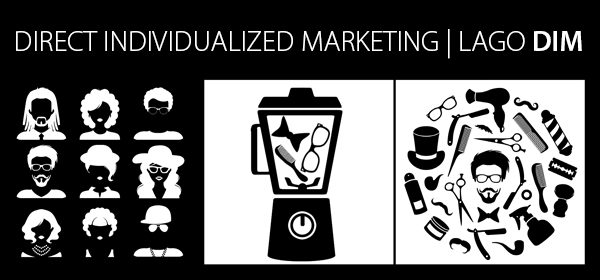
Need Personalized Content? LAGO DIM to the Rescue!
Our latest module addition, LAGO DIM, enables One-to-One personalized messaging.
Back at the LAGO User Conference, we showed you a pre-release demo of LAGO DIM. Fast forward to current day and we're looking for a "test" site. If you're interested in this type of technology and have a use case in mind, let us know.
With LAGO DIM (Direct Individualized Marketing), you can go beyond “One-to-Many” or “One-to-Few” communication—addressing relevant messages to qualified, individual customers and prospects. This module enables you to efficiently combine customer and PIM data to create personalized message campaigns—in print, via email, or in HTML.
Data Personalization Potential:
- Basic customer information (e.g., name, street, city)
- Known customer preferences and purchase history
- Purchased and related product information and images (from PIM and DAM data sources)
- Your LAGO library of templates for print (direct mail), email, and HTML landing pages
- Cross-channel references from the printed page to digital pages or e-commerce sites, via image recognition or QR Codes
LAGO’s unique combination of data and marketing systems with template design systems for print and digital channels provides a cost-effective solution for direct, individualized marketing communication.
For more information or a demo preview of LAGO DIM, please email info@comosoft.com.
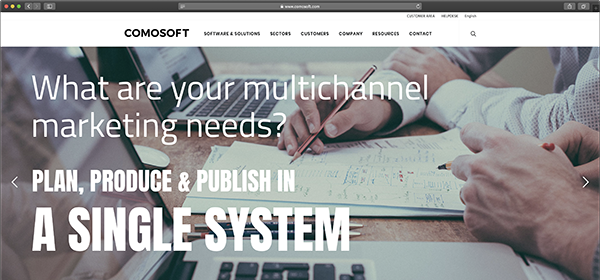
Comosoft.com Re-Launch–More to Come in the Months Ahead!
The marketing team at Comosoft has recently completed an extensive makeover of Comosoft.com. if you haven't been there lately, please stop by and check out our new digs! We've added a lot of new content and over the coming months, we'll be adding more module information, case studies, videos and event info. Be sure to check back often for the latest news. We highly value your feedback-please email info@comosoft.com with any website suggestions.

Where in the World is Comosoft?
Comosoft has had an exciting year: we've been very busy onboarding new customers in both the US and EU markets and have several more queued up for the coming months. After we wrap up our latest LAGO implementations in the US, we can safely say that Comosoft owns the retail home improvement landscape, powering retail production for the top three players in this space.
We also recently visited with our friends at Belcorp in Lima, Peru. Belcorp is the largest cosmetics company in South America. We're assisting them with their latest digital transformation project, adding Automated Page building to their production mix.
In addition to onboarding several new clients, we're also busy working on LAGO 5 upgrades. The requests continue to come in and we'd love to help you get this scheduled. If you have any questions regarding the LAGO 5 upgrade process, please email info@comosoft.com.


Welcome to the team!
We'd like to take this opportunity to introduce our latest addition to the Comosoft team, Scott Stafford. Scott comes to us with an extensive history in all the right places. To name a few, Scott is proficient in SQL, JavaScript, Python, Linux shell scripting, XML, and HTML.
In his role of Technical Support Analyst, Scott will be helping our Support Team and Derrick Pitts serve the technical needs of our customers. In his spare time, Scott is a technology enthusiast who enjoys spending time with his family locally here in Allen, TX.
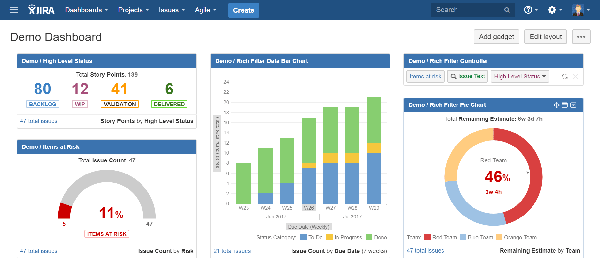
Tips & Tricks: JIRA Dashboards
Did you know that JIRA allows you to create multiple dashboards to help track issues and ticket assignments? Customized dashboards are a great way to organize your JIRA space. You can easily create widgets for lists, graphs or charts, providing a visual way to track everything on one screen.
For help with setting up a customized JIRA dashboard, please email support@comosoft.com.
Comosoft Newsletter (Winter 2018)

HAPPY HOLIDAYS |
 With the final weeks of autumn waning and Thanksgiving in the books, the holiday season is upon us–some of you may even have snow on the ground. With holiday production cycles at an end and spring campaigns in planning, we hope LAGO has been good to you and would like to take this opportunity to thank you all for being part of the Comosoft family.
With the final weeks of autumn waning and Thanksgiving in the books, the holiday season is upon us–some of you may even have snow on the ground. With holiday production cycles at an end and spring campaigns in planning, we hope LAGO has been good to you and would like to take this opportunity to thank you all for being part of the Comosoft family.
LAGO USER CONFERENCE: PAST & FUTURE |
 This year's LAGO User Conference @ Big Cedar Lodge was a fantastic event–the days were overflowing with great presentations and lively discussions. We hope you enjoyed it as much as we did! It was also the first time we've had attendees from our European market, making this a truly international event.
This year's LAGO User Conference @ Big Cedar Lodge was a fantastic event–the days were overflowing with great presentations and lively discussions. We hope you enjoyed it as much as we did! It was also the first time we've had attendees from our European market, making this a truly international event.
This year's User Conference marks both the end of an era and the beginning of a new one: going forward, the LAGO User Conference will become Blueprint, a part of our yearly event series. Furthermore, we've decided to alternate Blueprint's location between Europe and the US.
Our next event, Port of Thoughts, will take place at the Hotel Hafen in Hamburg on June 6th, 2019. Blueprint will resume in 2020 in Hamburg, and alternate with the US in the years to follow. We're looking forward to seeing you there!
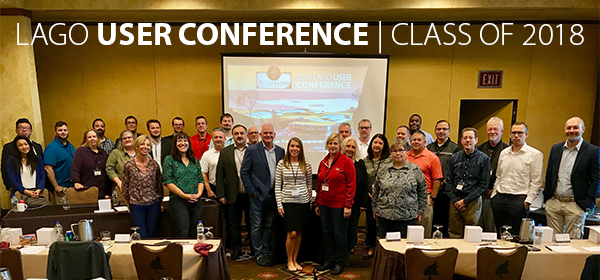
COMOSOFT IN THE MEDIA |
This week, in partnership with Multichannel Merchant, Comosoft published a LAGO case study produced with the help of our friends at Bass Pro Shops. A huge thanks goes out to Joe Gies and his crew for helping to make this such an interesting read. Be sure to check it out HERE.
MEET THE TEAM |

Some of you have probably already met our latest addition to the team, Mark Jones, at this year's User Conference. Mark comes to us with decades of industry experience and will serve as our Executive Vice President, Strategic Partnerships. Mark is an avid golfer, accomplished drummer and excited to be on board with Comosoft.

Reyn Ansley is the newest member of the support department. Reyn is a long-time user of LAGO and comes to us with years of experience using LAGO in the day-to-day marketing production for a major office supplies distributor. When not at the office, Reyn likes spending time outdoors and playing video games with his 10 year old twins.
Comosoft Newsletter (Summer 2018)
PUBLIC RELEASE: OCTOBER 9! |
 After many years in the making, LAGO 5 is set for relase on October 9, during our 2018 LAGO User Conference. We've really taken the "5" part of LAGO 5 to heart, transitioning LAGO's Adobe Flash based modules to HTML 5. Along with this major architectural update, we've added many new features too-security enhancements and our first LAGO API just to name two. In the coming weeks, we'll be releasing more LAGO 5 info, so stay tuned!
After many years in the making, LAGO 5 is set for relase on October 9, during our 2018 LAGO User Conference. We've really taken the "5" part of LAGO 5 to heart, transitioning LAGO's Adobe Flash based modules to HTML 5. Along with this major architectural update, we've added many new features too-security enhancements and our first LAGO API just to name two. In the coming weeks, we'll be releasing more LAGO 5 info, so stay tuned!
LAGO USER CONFERENCE |
CONFERENCE INFO
Oct. 8, 6:00 PM - Oct. 10, 1:30 PM
Location: Big Cedar Lodge, 190 Top of the Rock Road, Ridgedale, Missouri. Comosoft will provide round-trip transportation from the Springfield, MO Airport (SGF) to Big Cedar Lodge.
We're hoping to see as many of you as possible at our upcoming User Conference-we've planned some really interesting sessions, coming from both Comosoft and our customers. For a full breakdown of the conference agenda and conference information, please visit our website.
MEET OUR PRODUCT MANAGEMENT TEAM |

Johnny Cochran
Johnny joined our company back in 2011, transitioning from one of our customers to Head of Professional Services. As one of our key staff members, Johnny has played a role in most of our implementations over the past 7 years, helping to turn concepts into LAGO functionality.

Paul Kawano
Paul is our Head of Product Management and has been with us for over 12 years, holding several positions within our company, both in pre-sales and project management. Paul currently works closely with our customers and developers, helping to guide the evolution of LAGO.

Michael Siek
As one of our longest tenured staff members and Head of Software Development, Michael has helped to make LAGO all that is today. Starting as a Adobe InDesign and QuarkXpress plugin devloper with Comosoft 18 years ago, Michael now oversees all aspects of LAGO development.

